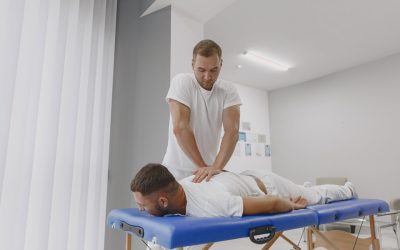Structural Integration is a form of bodywork that aims to improve the overall function of the body. It does this by addressing imbalances in the musculoskeletal system, which can lead to pain, discomfort, and poor posture. If you’re interested in learning more about this fascinating form of therapy, then you’ve come to the right place. In this article, we will give you a beginner’s guide to structural integration. Keep reading to learn more.
What Should A Beginner Expect From Structural Integration?
Most people who are new to Structural Integration have no idea what they should expect. They don’t know how it will feel, or what the results will be. If you’re new to the world of structural integration, here’s a beginner’s guide to help you understand what this type of bodywork is all about:
A variety of techniques are used by structural integration practitioners.
These techniques can be quite intense and often involve deep pressure and manipulation. However, most people find that the benefits are well worth the discomfort. The main goal of structural integration is to correct imbalances in the body. This may result in relief from pain or discomfort, improved posture, and a sense of overall wellness. Many people also report an increased sense of energy and vitality after undergoing structural integration therapy.
You may feel a variety of feelings.
It’s normal to feel a variety of sensations during and after a structural integration session. Some people feel an intense burning sensation as the muscles release toxins. Others feel nothing at all. It depends on the individual and what their body needs. Most people report feeling better after a session, even if they don’t feel anything during it.
Movement education may also be part of your Structural Integration sessions.
This is a way to learn how your body moves and how you can improve its movement. Movement education often includes exercises that you can do at home to help improve your posture and alignment. You may also be given specific instructions on how to move your body in certain ways. This information can help you maintain the improvements you make during your sessions.
Structural Integration is often completed in ten to thirteen sessions.
The number of sessions you undergo will depend on your specific needs. Some people only need a few sessions, while others may require more. Sessions are usually scheduled once or twice a week, depending on the practitioner. If you’re considering structural integration, it’s important to do your research and find a qualified practitioner.
Your health and personal background will frequently be discussed at the start of a series.
Your health and personal background will frequently be discussed at the start of a series. This is so the practitioner can get a better understanding of your body and what might be causing any imbalances. It’s also important to let your practitioner know if you have any medical conditions or are taking any medications. Be sure to follow all of the practitioner’s instructions, both during and after your sessions.
You should dress in clothing that is both comfortable and allows easy access to your body.
You should dress in clothing that is both comfortable and allows easy access to your body. This will make it easier for the practitioner to work on your muscles. You may also be asked to remove some or all of your clothing, so it’s best to be prepared.
You’ll be observed standing and moving by your practitioner.
During your sessions, you’ll be observed standing and moving by your practitioner. This is so they can get a better understanding of how your body moves and how it might be contributing to any imbalances. Also, this information will help them determine which techniques to use during your session.
For your benefit and that of your practitioner, photographs may be taken.
For your benefit and that of your practitioner, photographs may be taken. This is another way for the practitioner to get a better understanding of your body and any imbalances. They may also use these photos as part of their treatment plan. They can also be used to track any changes in your body over time.
Structural Integration is a process that can help improve your posture, ease pain, and increase your range of motion. So, if you’re curious about Structural Integration and what to expect, hopefully, this article has given you a little better idea. If you’re ready to give it a try, we would be more than happy to welcome you. If you have any other questions about Structural Integration or would like to schedule an appointment, don’t hesitate to call us today. We’re here to help.
Are You an Athlete Experiencing Pain But Don’t Know Where to Turn for Help?
Beyond Ergonomics gives athletes and desk professionals answers to their pain problems. Body imbalances, repetitive use, and lack of movement are the cause of many injuries and pain. Beyond Ergonomics helps you discover your imbalances and create change. MedicinEvolution’s purpose is to reduce pain and other symptoms that you haven’t had luck with. MedicinEvolution Bodywork Beyond Massage is the solution for many problems plaguing your body. Make your appointment today!






0 Comments